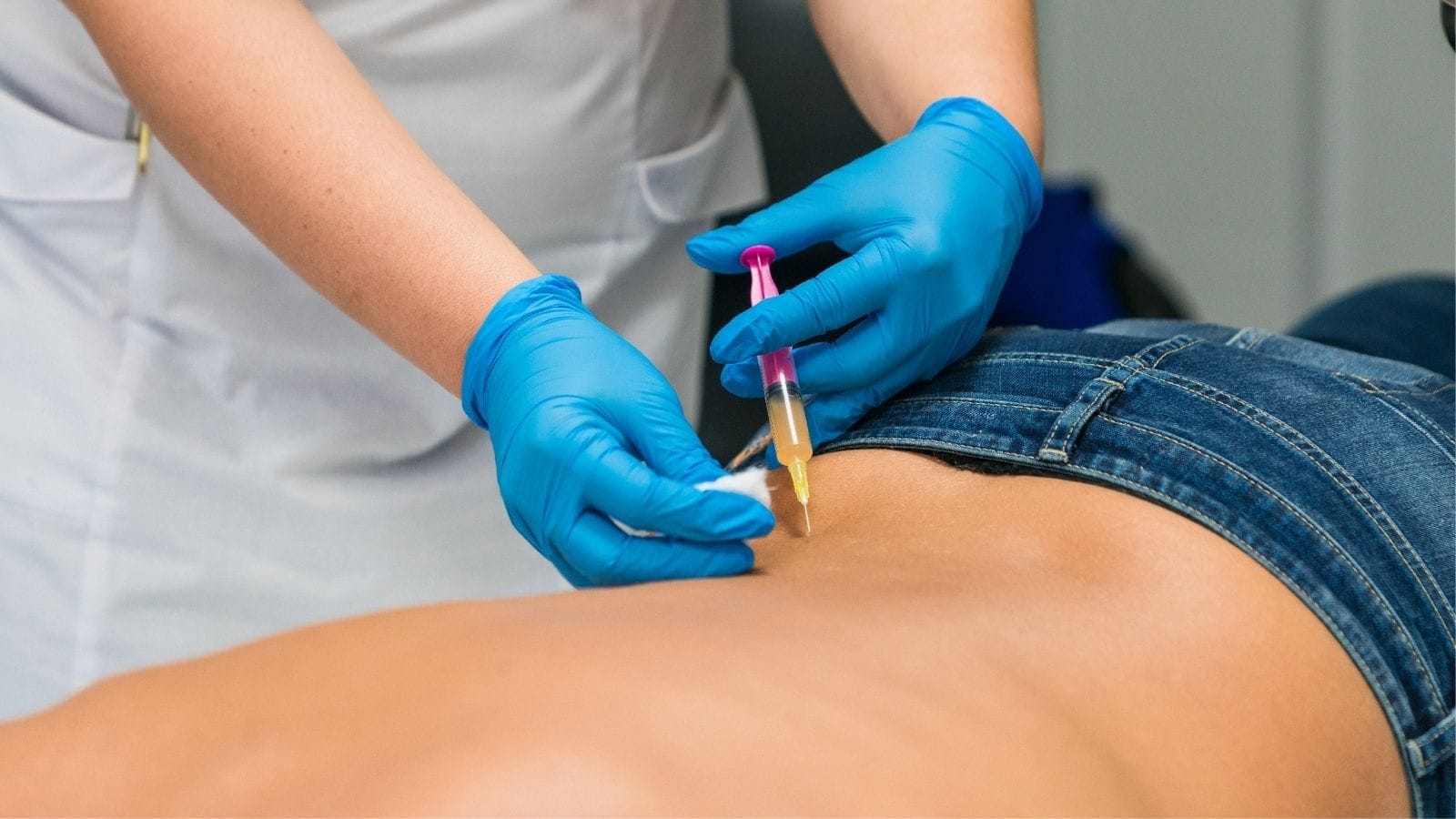Vasculitis is an inflammatory disease of blood vessels that leads to thickening, narrowing, or rupture of affected arteries and veins. This disrupts normal blood flow and may damage vital organs depending on the type and severity.
Symptoms of vasculitis vary but often include fever, fatigue, weight loss, and muscle pain. Localized signs depend on the vessels involved, such as skin rashes, neuropathy, vision problems, or kidney impairment due to vascular inflammation.
Large-vessel vasculitis affects major arteries such as the aorta, while small-vessel vasculitis targets capillaries and arterioles. Identifying the specific subtype is crucial for guiding treatment and preventing organ complications.
Treatment of vasculitis involves immunosuppressive medications, corticosteroids, and supportive care. Early diagnosis and long-term follow-up are essential to control inflammation, preserve organ function, and improve patient prognosis.
| Medical Name | Vasculitis (Vessel inflammation) |
| Affected Areas | Blood vessels (arteries, veins, capillaries); can affect any organ, most commonly the skin, kidneys, lungs, central nervous system, muscles |
| Causes | Autoimmune Diseases: The immune system attacks the vessels (e.g., Behçet’s disease, Takayasu arteritis, Polyarteritis nodosa, Wegener’s granulomatosis) Infections: Hepatitis B and C, HIVMedications: Certain drugs may trigger vasculitis (e.g., some antibiotics, diuretics) Cancers: Some types of cancer may increase the risk of vasculitis |
| Symptoms | General Symptoms: Fever, weight loss, fatigue, loss of appetite Skin: Rash, bruises, small red spots (purpura), ulcersKidneys: Blood in urine, high blood pressure, signs of kidney failure Lungs: Shortness of breath, bloody sputum Brain: Headache, signs of stroke, seizures Muscles and Joints: Muscle and joint pain, muscle weakness |
| Diagnostic Methods | Blood Tests: Inflammation markers (CRP, ESR), antineutrophil cytoplasmic antibody (ANCA) test Biopsy: Examination of affected tissue under a microscopeImaging: CT, MRI, PET-CT for detecting vessel changes or aneurysms Angiography: Detailed imaging of vessels |
| Treatment Methods | Corticosteroids: To reduce inflammation (prednisone) Immunosuppressants: Drugs such as azathioprine, methotrexate, cyclophosphamide to control immune responseBiological Therapies: Biological drugs like rituximab, especially in ANCA-associated vasculitis Infection-Related Vasculitis: Controlling infection with antibiotic or antiviral therapy |
| Possible Complications | Organ Damage: Inflammation of vessels may prevent adequate blood supply to organs (kidney failure, heart attack, stroke) Aneurysm: Weakening and widening of vessel wall, risk of ruptureVessel Occlusion: Narrowing or blockage of vessels, preventing oxygen and nutrients from reaching organs and tissues |
| Prevention Methods | Early treatment of autoimmune diseases, protection from infections, quitting smoking, healthy lifestyle (balanced diet, regular exercise, stress management) |
| Recovery Time | Mild cases may recover within weeks to months; more severe cases may become chronic and require ongoing treatment. Treatment varies depending on the type and severity of the disease. |
Prof. Dr. Özgür KILIÇKESMEZ Prof. Dr. Kılıçkesmez holds the Turkish Radiology Competency Certificate, the Turkish Interventional Radiology Competency Certificate, Stroke Treatment Certification, and the European Board of Interventional Radiology (EBIR). In his academic career, he won the Siemens Radiology First Prize in 2008.
Interventional Radiology / Interventional Neuroradiology
What Causes Vasculitis?
Causes of vasculitis include autoimmune mechanisms, infections, drug-induced reactions, and genetic and environmental factors. The body mistakenly targets its own immune system to attack blood vessels. This may sometimes occur together with other autoimmune diseases. It is particularly associated with diseases such as rheumatoid arthritis, systemic lupus erythematosus, and Sjögren’s syndrome. The immune system damages vessel walls, leading to various complications. Certain antibodies play an important role in the development of specific types of vasculitis.
Infections:
- Hepatitis B and C viruses
- Tendency to occur in polyarteritis nodosa and cryoglobulinemic vasculitis
Medications can cause vasculitis through hypersensitivity reactions. Immune responses triggered by some drugs may result in vessel inflammation.
Drug-Induced Causes:
- Antibiotics (e.g., penicillin)
- Blood pressure drugs (e.g., hydralazine)
- Illicit drugs (e.g., cocaine)
Genetic predisposition increases the risk of developing vasculitis in some individuals. Certain genetic markers are effective in the emergence of the disease. At the same time, environmental factors can trigger the disease. Exposure to chemicals or certain infections can initiate vasculitis in genetically susceptible individuals.
How Is Vasculitis Diagnosed?
Doctors use various methods to diagnose vasculitis. First, they start with a clinical assessment and examine the patient’s symptoms in detail. Blood and urine tests are then performed to determine the presence and level of inflammation. Erythrocyte Sedimentation Rate and C-Reactive Protein levels, known as inflammation markers, are measured.
Laboratory Tests:
- Erythrocyte Sedimentation Rate (ESR)
- C-Reactive Protein (CRP)
- Anti-Neutrophil Cytoplasmic Antibodies (ANCA)
- Urine Analysis
Various imaging techniques are preferred to assess the organs and vessels affected by the disease. Methods such as Computed Tomography and Magnetic Resonance Imaging are used to examine the affected areas in detail. Angiography is used to detect abnormalities in the vessels. In some cases, Positron Emission Tomography is especially useful for evaluating the extent of inflammation in large-vessel vasculitis.
Imaging Studies:
- Computed Tomography (CT)
- Magnetic Resonance Imaging (MRI)
- Angiography
- Positron Emission Tomography (PET)
Definitive diagnosis is usually made by tissue biopsy. Biopsies of affected tissues such as the skin, kidney, lung, or temporal artery are performed. Thus, the presence of the disease is directly proven by evidence.
Tissue Biopsy:
- Skin Biopsy
- Kidney Biopsy
- Lung Biopsy
- Temporal Artery Biopsy
- Nerve Biopsy
*We recommend filling out all fields so we can respond in the best possible way.
Can Vasculitis Be Treated?
Vasculitis can be controlled with various treatment methods. The main treatment strategies used in this disease include immunosuppressive therapies, biological agents, targeted therapies, and plasma exchange.
- Immunosuppressive Therapies: They control the overactive immune system in the disease. The most commonly used drugs include cyclophosphamide and glucocorticoids. These drugs are especially preferred in severe cases and require strict medical supervision.
- Biological Agents: Drugs such as rituximab, which specifically target B cells, have achieved significant success in vasculitis treatment in recent years. These treatments are particularly effective in achieving remission in ANCA-associated vasculitis.
- Targeted Therapies: Drugs that target pathways involved in the inflammatory process allow for disease control by reducing steroid use. For example, avacopan is used in the treatment of ANCA-associated vasculitis.
- Plasma Exchange: In severe cases, this method removes antibodies contributing to the inflammatory process from the blood. This method is usually applied together with immunosuppressive therapy.
What Are the Symptoms of Vasculitis?
Vasculitis has a wide range of symptoms affecting various organ systems. Fever is commonly observed during the active stages of the disease. Persistent fatigue and unintended weight loss are also frequently encountered systemic symptoms. In addition, patients may experience widespread pain resembling infections or autoimmune disorders.
Skin:
- Palpable Purpura: Reddish-purple spots caused by blood leakage, especially prominent on the legs.
- Rashes: Various types of red spots, swellings, and bruises.
Joints:
- Arthralgia and Arthritis: Pain and swelling in the knees and ankles.
Lungs:
- Cough and Hemoptysis: Sometimes bloody coughs occur as a sign of lung involvement.
- Shortness of Breath: Difficulty in breathing due to inflammation.
- Pulmonary Infiltrates: X-ray findings resembling pneumonia.
Kidneys:
- Glomerulonephritis: A silent condition characterized by blood and protein in urine.
- Kidney Failure: In severe cases, dialysis or transplantation may be required.
Sinuses, Nose, and Ears:
- Chronic Sinusitis: Persistent sinus congestion and infections.
- Nasal Bleeding and Ulcers: Frequent nosebleeds and sores.
- Hearing Loss: Hearing problems due to inflammation.
Eyes:
- Vision Loss: May appear suddenly or gradually.
- Red, Itchy or Burning Eyes: Often with light sensitivity.
Gastrointestinal System:
- Abdominal Pain: Pain and ulcers due to insufficient blood flow to the intestines.
Nervous System:
- Neuropathy: Numbness, tingling, or weakness.
- Stroke-Like Symptoms: Paralysis or other neurological disorders.
Blood:
- Anemia: Reduced red blood cell count.
- Elevated Inflammatory Markers: Increased ESR or CRP levels.
How Does Vasculitis Affect the Skin?
Vasculitis can affect the skin with a range of symptoms and can trigger various skin lesions. The disease most commonly presents with palpable purpura. These are raised, reddish-purple spots seen symmetrically on the lower extremities. It may be accompanied by itching, burning, or pain. In addition, vasculitis can cause other skin findings:
- Urticarial Papules and Plaques: Raised and red, resembling hives but lasting longer.
- Nodules and Ulcers: Nodules and ulcers occur due to the involvement of deeper skin layers.
- Bullae and Vesicles: Fluid-filled blisters may form, which can rupture and turn into ulcers.
Histopathological findings also explain the effects of vasculitis on the skin. Leukocytoclastic vasculitis is the most common form of small vessel vasculitis. In this condition, fragmentation of neutrophils and fibrinoid necrosis are observed in vessel walls. When medium and large vessels are affected, skin lesions may be more severe, resulting in ulcers, necrosis, or scarring.
Skin complications caused by vasculitis can sometimes be serious. Chronic ulcers, scarring, and atrophy may occur. In addition, these skin findings may indicate that the disease is systemic, meaning that internal organs may also be affected. This makes treatment more complex and often requires more aggressive therapies.
What Are the Different Types of Vasculitis?
Vasculitis is a disease with various types, characterized by inflammation of the vessels. Large vessel vasculitis is generally identified by Giant Cell Arteritis, commonly seen in elderly adults. This type mainly affects the scalp and neck arteries, especially the aorta and its major branches. On the other hand, Takayasu Arteritis is more common in young women and causes narrowing of the aorta and its branches.
Among medium vessel vasculitis;
- Polyarteritis Nodosa is present and impairs blood flow, but is not associated with small vessels or the lungs.
- Kawasaki Disease mainly affects children and involves the coronary arteries, leading to heart complications if untreated.
Small vessel vasculitis is divided into two main categories: ANCA-associated vasculitis and immune complex small vessel vasculitis. Among ANCA-associated vasculitides:
- Microscopic Polyangiitis and Granulomatosis with Polyangiitis, usually affecting the respiratory tract and kidneys.
- Eosinophilic Granulomatosis with Polyangiitis affects the respiratory tract and skin and is associated with asthma.
Among immune complex small vessel vasculitides:
- IgA Vasculitis and Cryoglobulinemic Vasculitis, which affect the skin, joints, and kidneys.
- Hypocomplementemic Urticarial Vasculitis, which leads to chronic hives and systemic involvement.
There are also variable vessel vasculitis and single organ vasculitis. Variable vessel vasculitides such as Behçet’s Disease and Cogan Syndrome can affect vessels of any size and are usually characterized by oral and genital ulcers, eye inflammation, and skin lesions. Single organ vasculitis affects a specific organ, and systemic disease-related vasculitis is seen together with other autoimmune diseases. In this category, Lupus Vasculitis and Rheumatoid Vasculitis are prominent.
Vasculitis Treatment Reviews
For reviews of Prof. Dr. Özgür Kılıçkesmez, you can check Google Maps or Doktortakvimi.

Interventional Radiology and Neuroradiology Speaclist Prof. Dr. Özgür Kılıçkesmez graduated from Cerrahpaşa Medical Faculty in 1997. He completed his specialization at Istanbul Education and Research Hospital. He received training in interventional radiology and oncology in London. He founded the interventional radiology department at Istanbul Çam and Sakura City Hospital and became a professor in 2020. He holds many international awards and certificates, has over 150 scientific publications, and has been cited more than 1500 times. He is currently working at Medicana Ataköy Hospital.









Vaka Örnekleri